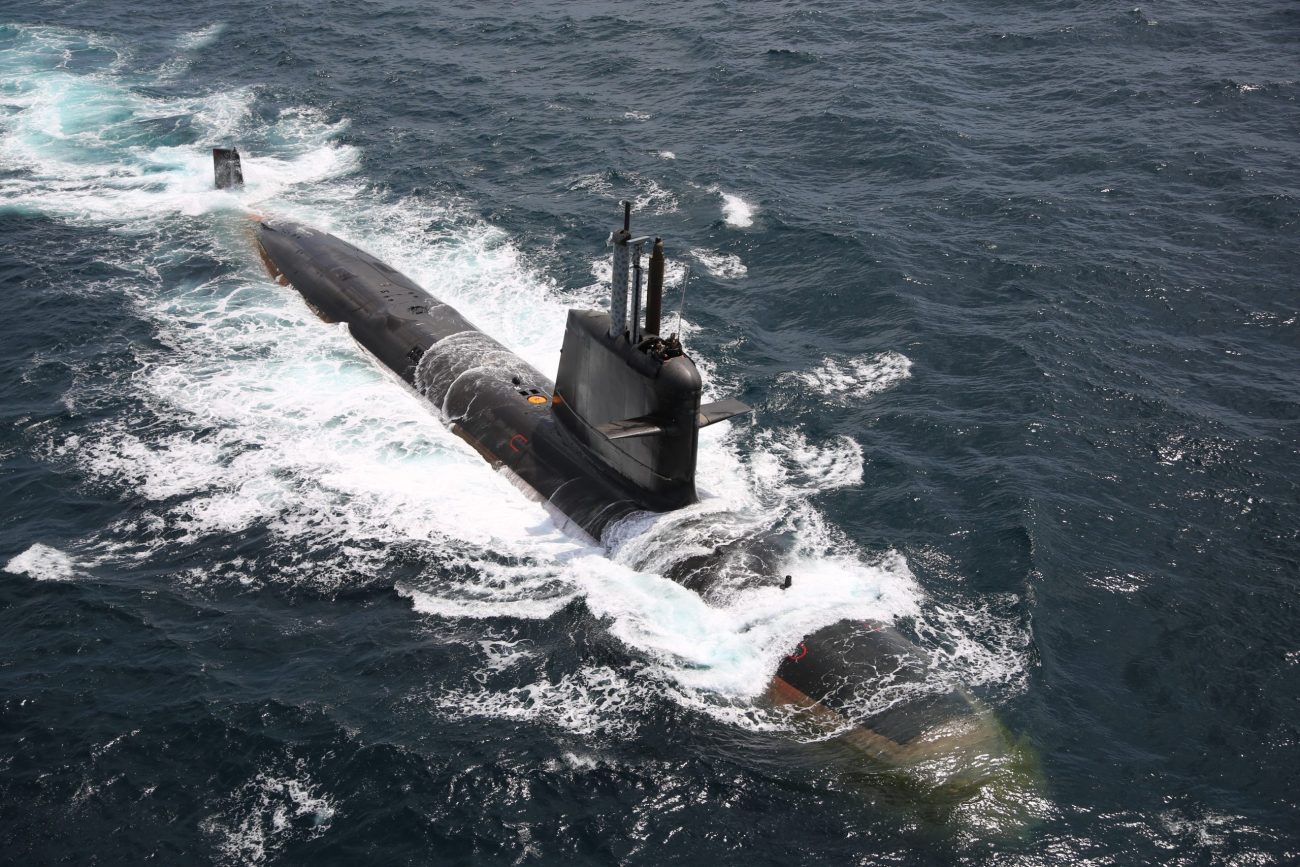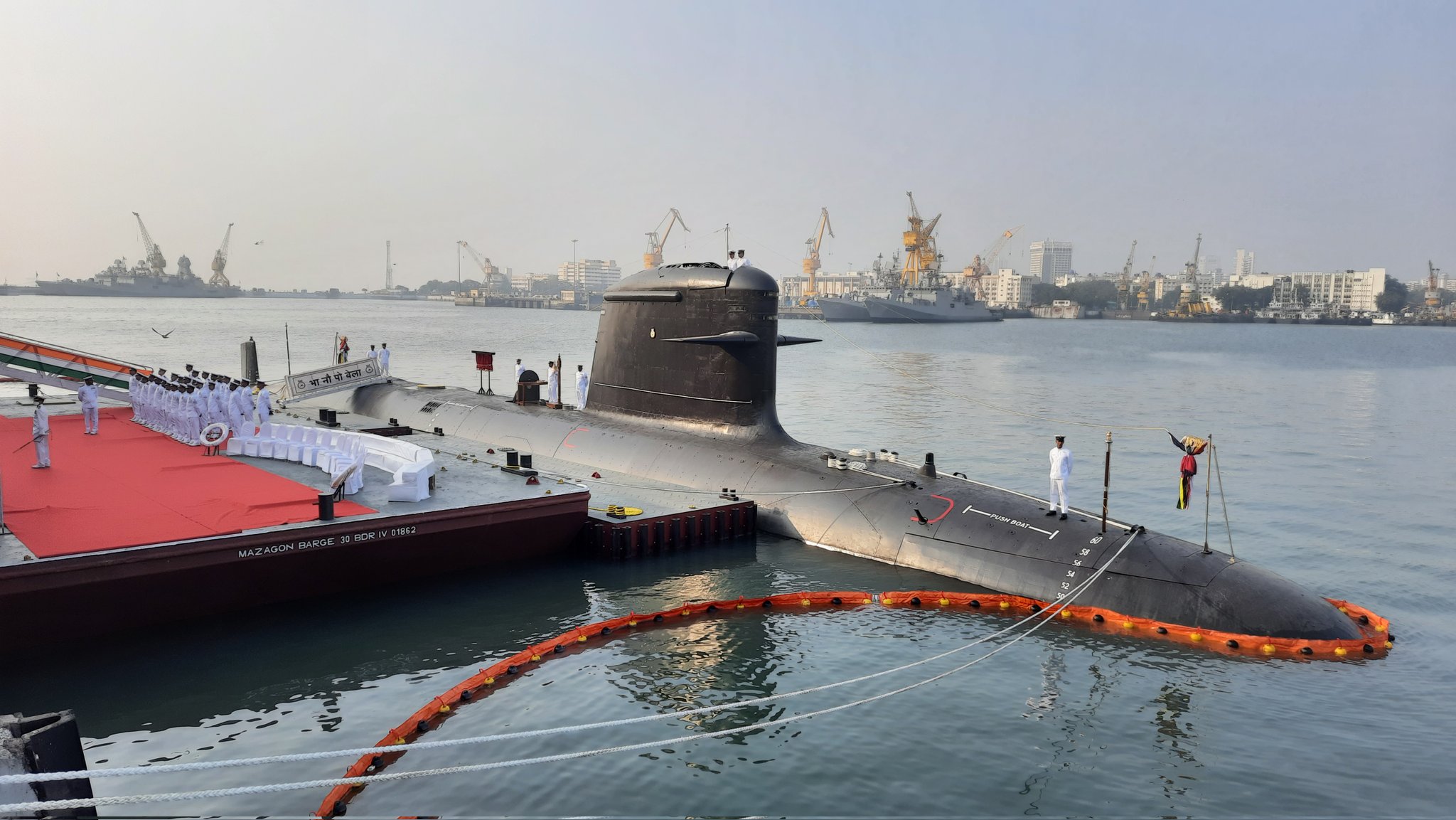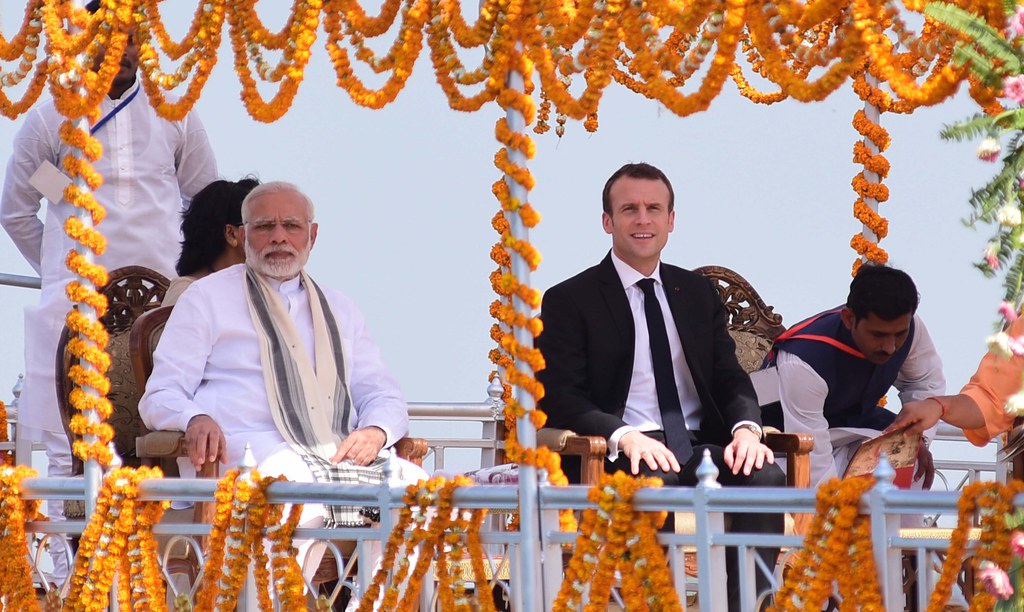India’s plan to indigenously build a diesel-electric class submarine under Project-75I hangs in the balance when the Indian Navy seeks to expand and modernize its fleet to counter an enhanced Chinese and Pakistani presence in the Indian Ocean Region.
“The Bayraktars Are Working” — Ukrainian Commander Exults After TB2 Drones ‘Destroy’ 2 Russian Vessels – Watch
In what could come off as a dampener for the manufacturing plans, the French company Naval Group has withdrawn from the competition for the Project-75I submarine, according to information released by French media Mer et Marine on April 29, 2022.
The Project 75 (India)-class submarines, abbreviated as P-75I, is a planned class of diesel-electric submarines for the Indian Navy. The Defense Ministry had ordered the construction of six units of submarines in July of last year. The project’s entire cost is estimated to be around 43,000 crores or $43 billion.
The P-75I class is a successor to the Indian Navy’s P-75 Scorpene-class submarines, the last of which was launched earlier this month by Indian Defense Secretary Ajay Kumar in Mumbai.
Powered By Leopard Tanks, Marder IFVs, Monster Pzh 2000 Howitzers – Can Ukraine Save Donbass From Russia?
The six conventional diesel-electric attack submarines are expected to include advanced capabilities such as Air-independent propulsion (AIP), Intelligence, Surveillance and Reconnaissance (ISR), Special operations forces (SOF), Anti-ship warfare (AShW), Anti-submarine warfare (ASW), Anti-surface warfare (ASuW), Land-attack capabilities, and other features.

All the submarines are to be manufactured in India under the ‘Make in India’ initiative. The government has picked two Indian shipyards, Larsen & Toubro (L&T) and Mazagon Dock Limited (MDL), as the two Indian finalists in the P-75I competition on January 21, 2020.
Additionally, it also shortlisted some foreign Original Equipment Manufacturers (OEM) as finalists in the P-75I project. ThyssenKrupp Marine Systems (TKMS) of Germany, Rubin Design Bureau of Russia, Navantia of Spain, Naval Group of France, and Daewoo Shipping & Marine Engineering (DSME) of South Korea had made the cut.
The French withdrawal — the reason for which was not specified — comes about two months after Russia withdrew from the competition in February this year.
The Russians offered India improved Kilo-class submarines — the type that makes up the bulk of India’s present conventional fleet — but withdrew from the P-75I project citing ‘technical’ reasons.
Additionally, in August last year, reports indicated that even Germany was reluctant to join the competition owing to its concerns related to the Request for Proposal.
According to some reports, the German side had informed the Indian government about its reasons for not participating in the contest just a month after the Request for Proposal (RFP) was released.
Marred By Delays
The P-75I project has been in limbo for a while after several unwarranted delays and pushbacks. According to a top official of India’s largest submarine builder, the government had to push back the bid submission from November 2021 to June 2022 after the majority of overseas participating companies found it impossible to reach the original deadline.
If the bids had come in November, field evaluation trials of the submarines would have commenced in mid-April 2022. However, now that the proposal is submitted in June, the government would have another two years to review it before placing orders by the end of 2024.
Further, the government is yet to provide approvals to participating foreign corporations, so more delays could be expected in an already dwindling process.
The shortlisted OEMs are required to choose between the two Indian shipyard finalists. The order for all six submarines will be awarded to the lowest bidder (L1), rather than being split between the two Indian businesses. On its part, Mazagon Dock Shipbuilders has the potential to manufacture 11 submarines at the same time in its Mumbai facility.
Why Are OEMs Withdrawing?
The consecutive disenchantment and withdrawal of the foreign contenders is a massive setback for the Indian Navy’s P-75I project.
Just a month after the RFP was issued, ThyssenKrupp Marine Systems (TKMS) of Germany, the frontrunner for the mammoth project, had expressed concern that some stipulations, such as a high indigenous content proportion and nearly unlimited liability on the foreign technology partner, maybe impossible to meet.
According to reports in the Indian media, the company was displeased with restrictions such as the indigenization content requirement, which was set at 45 percent for the first submarine and 60 percent for the sixth one.
A major objection addressed was that despite the fact that the submarines are to be built in an Indian yard, the conditions placed a virtually infinite obligation on the foreign partner for the submarines’ performance. The budget of Rs 43,000 crore was also criticized as being too low.
Earlier, after the draft note on technical requirements was shared, the Swedish company pulled out, with insiders claiming that its engineers and management deemed the terms difficult to meet.

Even though the Naval Group has stopped short of specifying a reason for exiting the competition after about a year, the submarine offered by the French reportedly does not fulfill the requirement of Lithium cell Air-Independent Propulsion. For the Indian side, that is a major technical requirement.
To put the withdrawal of the French giant in perspective, the EurAsian Times spoke to Vice Admiral Shekhar Sinha (retd). He said “If they have withdrawn, then the rest will remain, contenders, if the Navy seeks RFP. Some more clarity is required on whether the Navy is going ahead with the existing proposal or not. We need to wait for further announcement on this issue.
I also understand that except for South Korean Submarine which has a proven Lithium Cell AIP all other bidders have pulled out either on grounds of not meeting technical QRs or the liability clause of the GoI. That leaves the 75 (I) in a single vendor situation. A call will have to be taken by the Govt. The fate of 75(I) probably hangs in balance”, he added.
The withdrawal of the French Naval Group could be discouraging as it was this same company that transferred technology to India for manufacturing the Scorpene-class submarines at the Mazgaon Dockyard Limited.
Further, the announcement came right before the scheduled visit of the Indian Prime Minister to France. However, it would be premature to speculate whether a relook of the contract could be discussed.

The Indian Navy has a 30-year submarine building program that involves designing and manufacturing submarines in India. The entire program is running many years behind schedule- a situation that is expected to become worse due to the delay in the 75-I project.
On the contrary, as a result of the military association between China and Pakistan, the latter is supposed to receive eight submarines from China, out of which 4 will be built in Pakistan.
The induction process has already started. Furthermore, with 3/4 Frigates/Destroyers, Pakistan would have a separate Navy that could serve as an extension for the Chinese PLAN in the Indian Ocean Region.
As geopolitical faultlines become more prominent and China’s presence in the Indian Ocean Region is multiplied, it would do well for the Indian side to set the ball rolling and make the terms of its contract as also its technical requirements more feasible for foreign vendors.
- Contact the author at sakshi.tiwari9555@gmail.com
- Follow EurAsian Times on Google News




